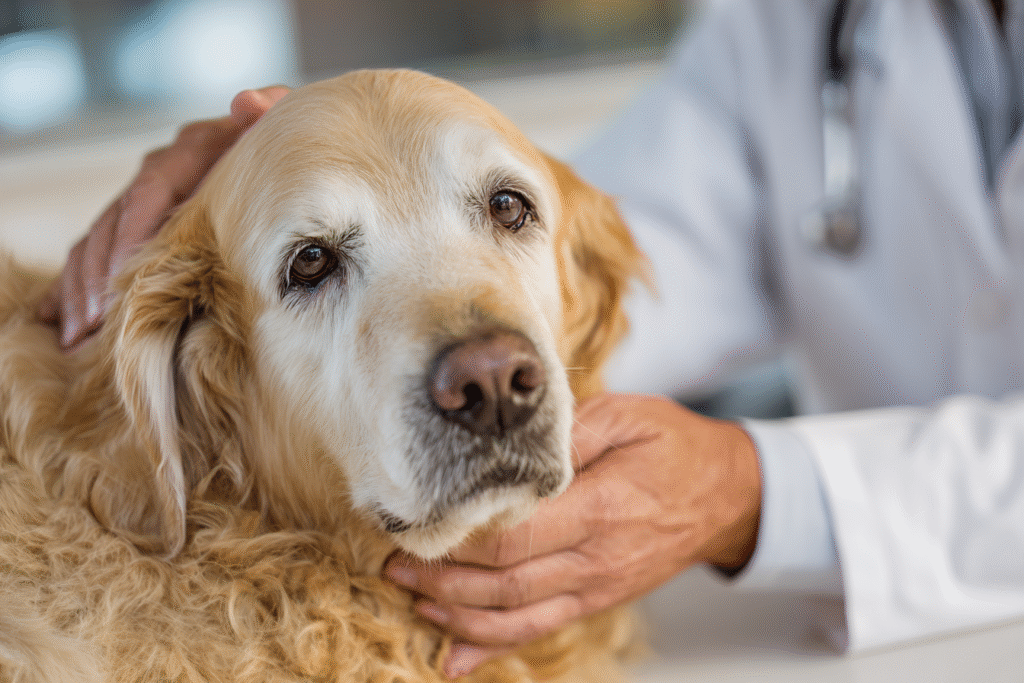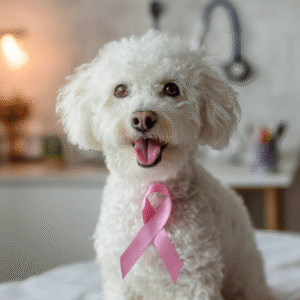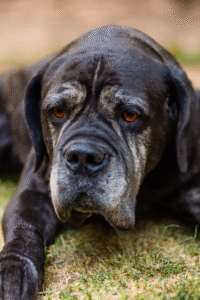How to Improve Quality of Life for a Dog with Cancer
Receiving a cancer diagnosis for your beloved dog is a heartbreaking experience, and your immediate focus naturally shifts to their well-being. This guide is dedicated to showing you how to improve quality of life for a dog with cancer, focusing on practical steps you can take right now. We will explore effective palliative care for dogs at homeand strategies for keeping a sick pet comfortable, including understanding the role of natural supplements for dogs with cancer. Ultimately, learning to recognize the signs a dog with cancer is in pain is the first step toward providing them with the loving support they deserve during this challenging time.
Table of Contents
- Understanding Your Dog’s New Reality
- Recognizing the Signs a Dog with Cancer is in Pain
- Palliative Care for Dogs at Home: Creating a Haven of Comfort
- The Role of Nutrition in Keeping a Sick Pet Comfortable
- Supportive Care with Vidatox: A Natural Ally
- Exploring Natural Supplements for Dogs with Cancer
- Maintaining Mental and Emotional Well-being
- Frequently Asked Questions (FAQ)
Understanding Your Dog’s New Reality
First and foremost, it is crucial to work closely with your veterinarian or a veterinary oncologist. They will create a treatment plan tailored to your dog’s specific type of cancer, age, and overall health.
However, medical treatment is only one part of the equation. Your role in providing comfort and care at home is just as vital.
The primary goal shifts from curing the disease to managing symptoms and maximizing happiness. Therefore, learning how to improve quality of life for a dog with cancer becomes your most important mission.
This journey is about making every day the best it can be, filled with love, comfort, and dignity.
Recognizing the Signs a Dog with Cancer is in Pain
Dogs are masters at hiding discomfort, a trait inherited from their wild ancestors. Because of this, you must become a keen observer to identify the subtle signs a dog with cancer is in pain.
Look for changes in behavior, as these are often the clearest indicators.
Common signs a dog with cancer is in pain include:
- Whimpering, yelping, or growling, especially when touched.
- Reluctance to move, climb stairs, or jump.
- Excessive licking or chewing at a specific spot on their body.
- Loss of appetite or disinterest in food.
- Changes in posture, such as a hunched back.
- Panting more than usual, even when at rest.
- Becoming more withdrawn, hiding, or showing uncharacteristic aggression.
Recognizing these signs a dog with cancer is in pain is the critical first step in addressing their discomfort and significantly contributes to keeping a sick pet comfortable. If you notice any of these, contact your vet immediately. They can help you with a pain management plan, which is fundamental to how to improve quality of life for a dog with cancer.

Palliative Care for Dogs at Home: Creating a Haven of Comfort
Palliative care focuses on relieving symptoms and stress, not just on treating the disease itself. Effective palliative care for dogs at home transforms your living space into a sanctuary for your pet.
The foundation of keeping a sick pet comfortable is a supportive environment.
Start with their bed. Provide an orthopedic bed with plenty of cushioning to support sore joints and relieve pressure points. Place it in a quiet, low-traffic area where they can rest undisturbed but still feel like part of the family.
Make food and water easily accessible. If your dog has trouble moving, place their bowls near their resting area so they don’t have to travel far. Consider using raised bowls if they have neck or back pain. This simple adjustment is a cornerstone of good palliative care for dogs at home.
Keep a predictable routine. Dogs thrive on routine, and this is even more true when they are ill. Consistent feeding times, gentle walks (if able), and rest periods can reduce anxiety.
Adapting your home is a powerful way to show love and is essential for anyone asking how to improve quality of life for a dog with cancer.
The Role of Nutrition in Keeping a Sick Pet Comfortable
Nutrition plays a surprisingly large role in keeping a sick pet comfortable. A sick body needs high-quality fuel to maintain strength and support the immune system.
Cancer can often cause a loss of appetite or changes in metabolism. Your vet may recommend a specific diet, often one that is higher in protein and healthy fats and lower in simple carbohydrates.
The goal is to provide a diet that is both highly palatable to encourage eating and nutrient-dense. Sometimes, warming up their food slightly can enhance the aroma and make it more appealing.
Proper nutrition supports their overall well-being, making it a crucial component when considering how to improve quality of life for a dog with cancer. This is where you might also discuss natural supplements for dogs with cancer with your veterinarian.

Supportive Care with Vidatox: A Natural Ally
When exploring how to improve quality of life for a dog with cancer, many pet owners look for integrative options that can work alongside conventional veterinary treatments. This often leads them to consider supportive therapies, and one of the most promising is Vidatox. This natural supplement, derived from blue scorpion venom, has gained attention for its unique properties that can significantly aid in a dog’s comfort and well-being during this difficult journey.
The primary benefit of Vidatox in the context of supportive cancer care is its powerful anti-inflammatory and analgesic (pain-relieving) properties. Inflammation and pain are constant companions to many types of cancer, severely diminishing a dog’s quality of life. By helping to reduce this inflammation, Vidatox can address one of the core sources of discomfort. This is not a cure, but a vital component of palliative care for dogs at home. Its natural analgesic effect offers a way to manage pain, which is paramount when you see the signs a dog with cancer is in pain.
Furthermore, owners who use Vidatox often report a noticeable improvement in their pet’s overall vitality and energy levels. While their dog is sick, seeing them show interest in a short walk, greet you at the door, or enjoy a meal can feel like a monumental victory. This boost in vitality is a key aspect of keeping a sick pet comfortable and happy. Integrating Vidatox into your dog’s daily routine, under the guidance of your veterinarian, can be a proactive step. It functions as one of the most effective natural supplements for dogs with cancer, focused purely on improving their comfort and making their remaining time as joyful as possible. The goal with Vidatox is simple: to help your best friend feel more like themselves again.
Exploring Natural Supplements for Dogs with Cancer
Beyond specific products, the world of natural supplements for dogs with cancer offers several avenues for supportive care. It’s absolutely essential that you discuss any supplement with your vet before use to ensure it doesn’t interfere with prescribed treatments.
Some commonly discussed options include:
- Omega-3 Fatty Acids: Found in fish oil, these are known for their strong anti-inflammatory properties.
- Antioxidants: Vitamins C and E, as well as compounds like coenzyme Q10, can help support cellular health.
- Mushrooms: Certain medicinal mushrooms, like Turkey Tail, are being studied for their immune-boosting properties.
These natural supplements for dogs with cancer are not standalone treatments. They are part of a holistic approach focused on keeping a sick pet comfortable and supporting their body’s natural resilience. Their use is a key part of learning how to improve quality of life for a dog with cancer.

Maintaining Mental and Emotional Well-being
Finally, never underestimate the power of your presence and affection. Your dog’s emotional health is just as important as their physical health.
Spend quality time with them every day. This doesn’t have to be strenuous activity. Gentle petting, talking to them in a calm voice, or simply sitting with them provides immense comfort.
Engage their minds with simple puzzle toys if they are able, or offer a new, interesting scent on a cloth for them to sniff. This mental stimulation is a form of enrichment that greatly contributes to their well-being.
Your calm and loving presence is the most powerful tool you have for keeping a sick pet comfortable. It’s the essence of palliative care for dogs at home and the most profound way to show them you are there for them, no matter what. This is truly how to improve quality of life for a dog with cancer.

Frequently Asked Questions (FAQ)
Q: How do I know if my dog’s quality of life is still good? A: Vets often recommend using a “quality of life” scale. This involves rating your dog’s happiness, appetite, mobility, pain levels, and interest in daily activities. If they are still enjoying more good days than bad and can participate in activities they love (even in a limited way), their quality of life is likely still good. Regular check-ins with your vet are crucial.
Q: Can I walk my dog if they have cancer? A: This depends entirely on your dog’s condition, energy level, and pain. Short, slow, gentle walks can be beneficial for both mental and physical health. Always follow your veterinarian’s advice and never push your dog to do more than they are comfortable with.
Q: Is it safe to give my dog supplements during chemotherapy? A: You must speak with your veterinarian or veterinary oncologist before giving any supplements. Some natural compounds can interfere with the efficacy of chemotherapy or other medications. Full transparency with your veterinary team is essential for your dog’s safety and is a key part of providing good palliative care for dogs at home.




